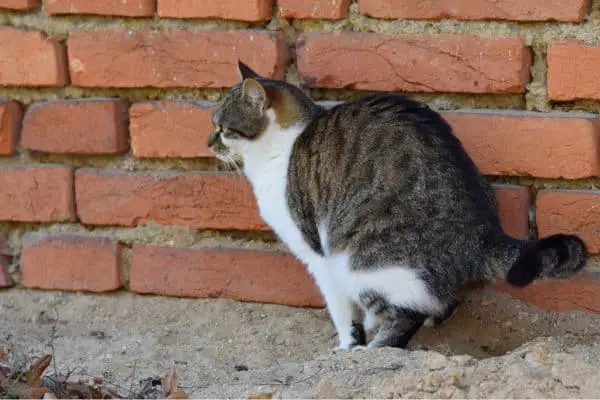Take a moment to imagine life outside the litter box. There’s no more stinky litter to clean out, no more litter getting tracked around your house, and what about all that money you’d save on litter.
It sounds like a dream that’s just a little too good to be true for most cat owners but it isn’t. Fact is, it is actually possible to train your cat to go to the bathroom outside – just keep in mind that it is a task that requires patience, love and affection. Yes, plenty of patience.
Introduction: A safe outdoor space
Before you begin training your cat to do her business outside, the first thing you want to do is ensure that the outdoors is safe for your cat.
If your cat is an indoors cat, take necessary precautions that she won’t run away or get lost in the great outdoors by installing a fence if you don’t have one already. If you already have boundaries on your property, check the periphery of the fence for holes or gaps that your cat can get out from.
A fence is also a good idea for keeping other animals away from your cat’s territory. If there are stray cats or neighborhood dogs that wander into your backyard, your cat is going to be more reluctant to “go” outside.
Not to mention, that situation puts her in a vulnerable position for catching fleas.
Choosing the best spot and adding litter to that spot
The perfect outdoors cat bathroom should…
- Provide privacy in the form of bushes and shrubs that give your cat some cover to hide behind when she does her thing.
- Be pretty close to the house.
- Have good quality soil that’s easy for her to dig.
If you don’t have a lot of foliage around your yard to give your cats cover and security, a good idea is to construct a little kitty latrine of your own by digging a little pit and placing her favorite litter inside it. You can gradually begin mixing the litter with soil and in time, stop using the litter altogether.
Keep in mind cats aren’t exactly dogs, but may still get distracted by a squirrel. They also don’t react well to being startled. Not to mention that cats can be very finicky and will likely prefer an area that provides some privacy and makes it easy to bury their waste.
A fenced-in yard that isn’t being used by stray cats, dogs or playing children can reduce the risk of outside elements interfering with training your cat to go outside.
Of course, just ’cause it’s the best spot for you doesn’t means she’ll agree. As all cat owners know, felines tend to want a say in everything so don’t be surprised if she ends up choosing a different place to do her business. If that’s the case put litter in that area also.
Let your cat explore the area
Keep an eye on your cat while she’s outside to make sure she doesn’t appear distressed or try to run off in a panic. Give her time to explore and get comfortable. You may want to accompany her initially for re-assurance. This is especially true if she has rarely been outside before or there may be other animals in the area. Even when she sees the kitty litter, it may take her a while to get the idea that it’s an acceptable place to go.
Regularly add fresh litter to the area
The litter is familiar to your cat and it makes burying her waste super convenient. We want to make things as convenient as possible initially so keep the area topped up with fresh litter.
Let your cat out shortly after eating
Cats are more likely to want to go within 20 minutes of eating. You usually won’t need to take her over to the designated spot or praise her for using that spot. Cats are clever creatures so she can figure it out, particularly if some of her kitty litter is there!
If kitty is catching on start mixing dirt with the litter
Once you’ve had a some success, start adding a little dirt so she can get used to the way that the designated area smells when she goes. Continue taking her out on a regular basis after she eats.
If kitty is not catching on take the litter box outside
You want to be careful with this method because she may still try to go in the area where the litter box is located in your house. Block off that area so your cat can’t get to it and continue taking her outside. Put the litter box near the cat door and, when she finally does start using it, gradually move the box toward the designated outdoor area.
Once she is going in her litter box in the designated area for a couple of days, start dropping fresh litter around the outside of the litter box, and don’t clean the litter box. You want to start enticing her to go in the outdoor area, as it’s more appealing than stepping into a dirty outdoor litter box. Keep that area topped up with fresh litter and move the litter box away from the area after a few more days. Hopefully that’s the last time you’ll ever have to clean it!
If successful consider installing a cat door
When you are confident that your cat is finally trained and won’t bolt, consider installing a cat door so your kitty can come and go whenever she needs to. That way, your cat can go in and out on her own instead of having to wait for you and risk an accident.



